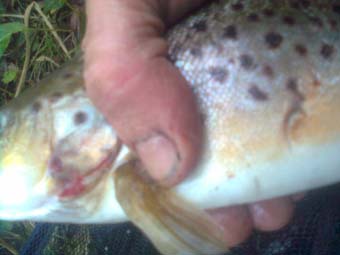
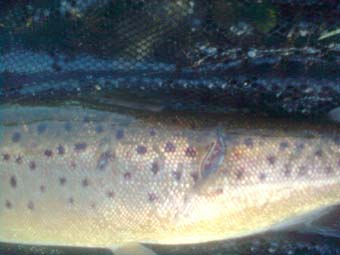
The number of cormorants in the Uk has increased by 17 times in the last 25 years and the RSPB do not see that this is a problem
These fish are just a few ot the many injured fish that are swimming about in our rivers at present, there are no pictures of damaged dace because this small fish has been almost totally wiped out by the cormorants and because it is a small fish, only growing to about a pound any dace that is grabbed by a cormorant is swallowed thereby eating the evidence |
|---|
 |
For anyone to say that this damage is Ok would be insane, ok so these are stocked fish but what is a business owner meant to do? There are almost no wild fish left and his fishermen wish to come and catch something and before you tell me that the cormorants are only visiting because the river is overstocked please bear in mind that these fish cost £15.00 each minimum so only an idiot would be overstocking. |
|---|---|
 |
Would you be happy to eat this fish? |
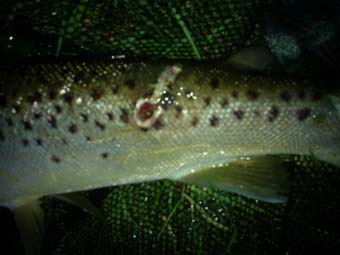 |
This brown trout caught Jan 2014 on the river test hampshire was injured by a cormorant, it is a fish stocked by the owner of the river as there are not many wild fish left for his fishermen to catch. It has an infected wound that would stop anyone wanting to eat it it will probably die from this injury in about 3-6 monthe. The cost to the owner is £15.00 for each trout £5.00 per pound |
|---|---|
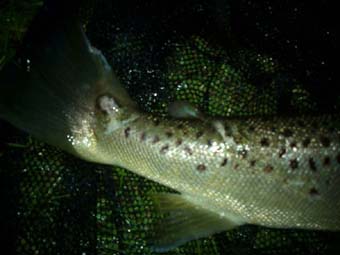 |
This is a picture of the same fish from the other side. Anyone who has a business would not be happy with these sort of losses Birdwatchers say that we should leave it to nature and this will controll cormorant numbers, this means shit fishing for cormorants so that they starve to death also it means shit fishing for us |
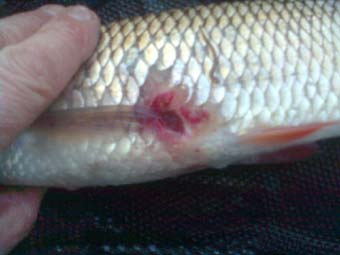 |
This young chub was caught near testwood Pool on the river Test in Hampshire More damage caused by cormorants, when their numbers finally reduce (as they are allegedly going to) because they are starving to death it will partly due to the number of fish that they killed but did not eat! |
|---|---|
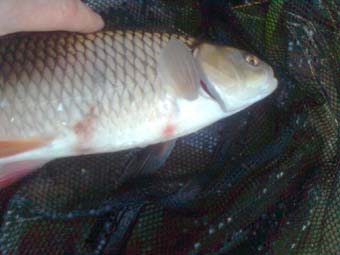 |
The same fish from the other side you can see that it's a young fish that should live to reproduce but probably won't thanks to a cormorant |
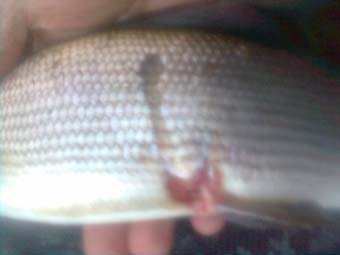 |
River Wye 2014 |
|---|---|
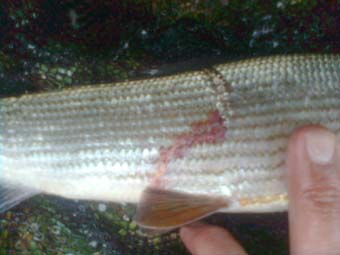 |
River Wye 2014 |
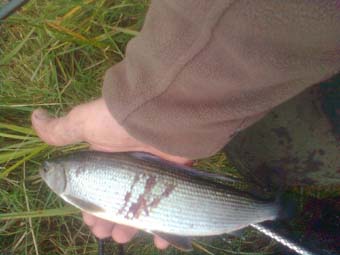 |
Grayling River Test 2013 looks as if it has been attacked with a stanley knife | 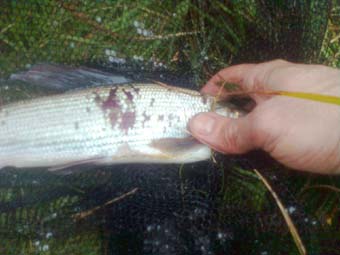 |
Grayling River Test 2013 the same fish from the other side |
|---|
| This is a very rare fish, a dace that has been grabbed by a cormorant but escaped, very unusual, usually these fish are swallowed and do not escape, each cormorant would need at least 8 of these adult fish a day to survive, this is why vast shoals of these fish have dissapeared from our rivers. |
|---|
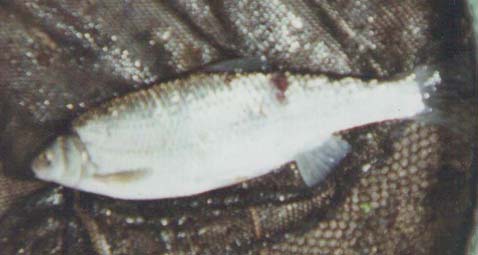 |
These small fish are the staple food for Herons, Grebes, Kingfishers, Pike Perch Zander Chub Trout etc. So when a large seabird arrives in large numbers it will totally upset the natural balance. |
|---|
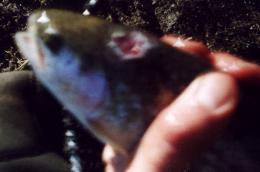 |
This rainbow trout (approx. weight of 1lb 4oz.) was caught on Christmas Eve 2000 at Downton on the Hampshire Avon. It's injury can clearly be seen. This was caused by a cormorant that had the hope of swallowing this fish, but caused (in the long term) probably fatal injuries to the fish in the attempt. |
I've
seen many more injured fish in the water than I have been able to catch
and photograph. It is quite difficult to catch or find injured fish because
they will not usually feed and if they are unable to sustain themselves
in the flowing water they are simply swept away. |
|
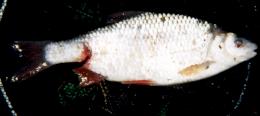 |
This 1lb 13oz roach was caught in December 1999 at Downton on the Hampshire Avon. This beautiful fish has been grabbed by a cormorant and shaken until a chunk was torn out of it. Amazingly this fish survived. | |||||||||||||||||||||||||||||||||||||||
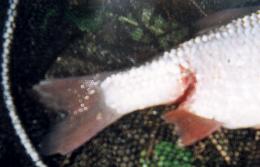
|
After these photographs were taken I returned the roach to the water, though it is doubtful whether it would be able to survive long enough to grown on or to breed. Sadly, this fish is probably dead now, having been attacked by a non-indigenous bird which had no hope of ever being able to swallow it in order to feed itself and it can no longer produce young fish to feed any other birds either.(Downton is at least 25 miles from an estuary.) |
|||||||||||||||||||||||||||||||||||||||
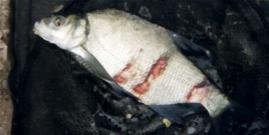
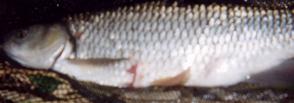
|
These three bream are from
a lake in County Cork, Southern Ireland, they were caught in 2001 and they
have clearly been badly damaged by cormorant attacks.
|
|
|
The longer that I have this site up the more horror stories that I hear from other anglers, I spoke to one the other day and he told me a tale of an afternoon he spent on the River Rother in Sussex, Southern England. This angler saw one cormorant kill thirteen chub in one afternoon the bird only ate two of them because the others were too large for it to swallow but they were so badly damaged in its attempts to swallow them that the fish floated off downstream and died anyway. Apart from the obvious environmental damage to trees, the water pollution from their shit, a severe shortage of food for herons, otters and other natural predators that are meant to be on our waters. Also many lost and injured fish. There are other less obvious consequences of this alien invasion. The price of stock fish has gone up with the increase in demand creating temptations for fraud by fish dealers. Vast shoals of silver fish have suspiciously disappeared from some of the smaller free waters that I know of here in Hampshire. These waters are too small for it to have been cormorants. There are fewer anglers and the ones that are left are forced to go fishing on the overstocked commercial fisheries that the environmentalists and anti anglers hate so much. |
||
Cormorant damage on the rivers, Avon Test Itchen Hants Stour Frome Dorset Kennet Loddon Berkshire Wandle Wey Mole Surrey Wye Usk Lugg Herefordshire Severn Shropshire Thames Thame Evenlode Cherwell Windrush Oxfordshire Chelmer Wensum Rother Arun Sussex Wylie Nadder Wiltshire Bristol Avon Frome Tay Aire Clyde Don Spey Tyne Tees Derwent Medway Bann Eden Trent Dee Ribble Mersey Witham Tweed Ure Great Ouse Nene Slaney Barrow Shannon Suir Boyne Corrib Liffey Blackwater Lee Lea Swilley Foyle Lagan Nore |